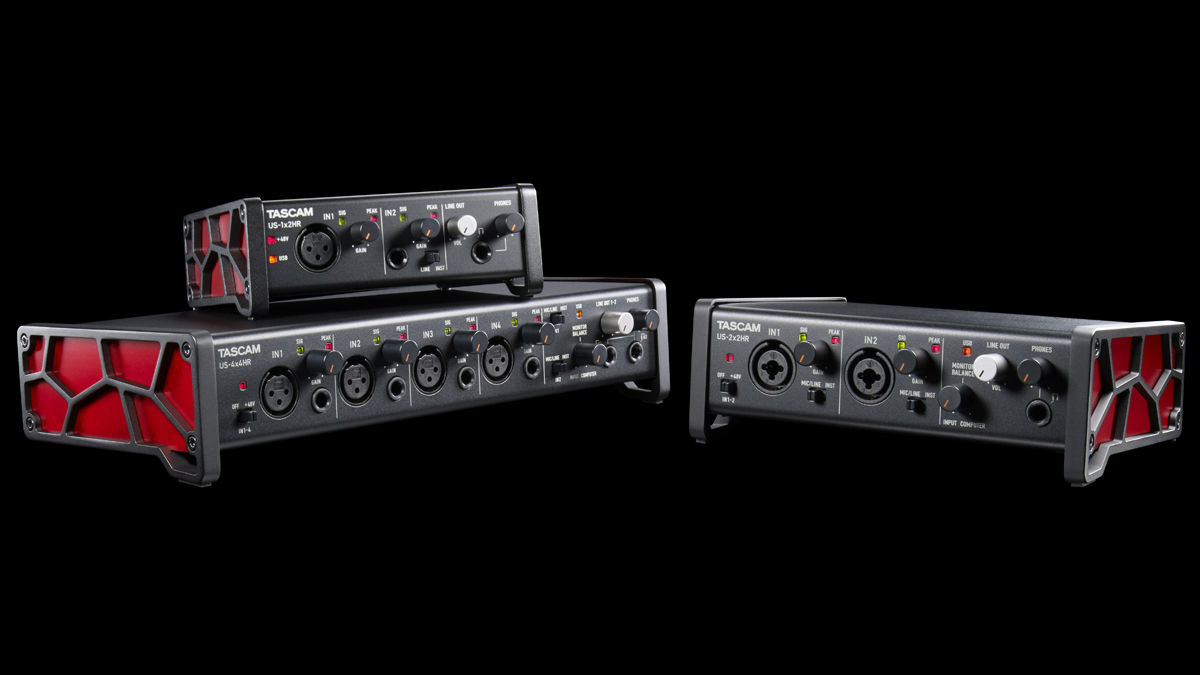Tascam’s new US-HR USB audio interfaces looks like they belong in Spider-Man’s studio
Do these three new 24-bit/192kHz models deserve superhero status?

Tascam is back on the audio interface trail with the launch of the US-HR series. This comprises three models - the US-1x2HR, US-2x2HR and US-4x4HR - all of which can operate at 24-bit/192kHz.
As you’d expect, each model offers a slightly different I/O configuration and is suited to a different kind of user. Designed for solo artists, the US-1x2HR has a single XLR mic input and one TRS instrument/line input, both of which are switchable to line inputs on RCA connectors. There are two RCA outputs.
The US-2X2HR, meanwhile, is a slightly more rounded offering that gives you two mic/line/instrument inputs and two balanced line outputs, with the bonus of MIDI I/O.
Finally, there’s the comprehensive US-4x4HR, which offers four XLR mic inputs, four TRS balanced line inputs (two of which can also be used for instruments), four balanced line outputs, MIDI I/O and two headphones connectors. As well as operating as USB audio interfaces, each model in the range can also service as a standalone preamp.
Spider-Man-style red and black side panels on each of the interfaces ensure that the US-HR series models have a distinctive look, and in terms of performance we’re promised a very high signal-to-noise ratio and ultra-low latency (with buffer sizes starting from four samples). There’s also a mono/stereo switchable Loopback function that’ll be useful for live streaming.
The obligatory software bundle contains Steinberg Cubase LE for PC and Mac, Cubasis LE3 for iOS, IK Multimedia SampleTank SE 4 and a free 3-month subscription to Auto-Tune Unlimited from Antares.
The US-HR range will be available in early December. Prices will be £113/€125 for the US-1x2HR, £144/€169 for the US-2x2HR and £231/€255 for the US-4x4HR.
Want all the hottest music and gear news, reviews, deals, features and more, direct to your inbox? Sign up here.



I’m the Deputy Editor of MusicRadar, having worked on the site since its launch in 2007. I previously spent eight years working on our sister magazine, Computer Music. I’ve been playing the piano, gigging in bands and failing to finish tracks at home for more than 30 years, 24 of which I’ve also spent writing about music and the ever-changing technology used to make it.